Dosing with T3-only (whether by itself, or in combination with other thyroid meds)
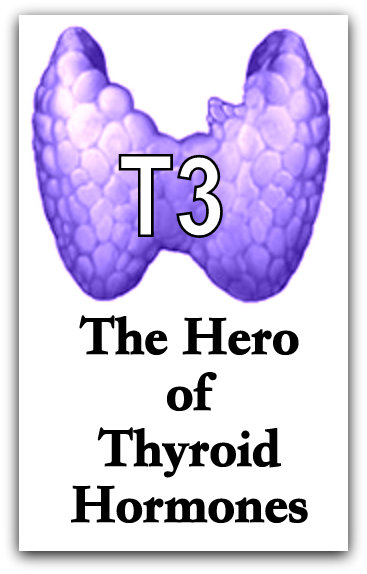
Whether in a working NDT , or T4/T3, or just T3 alone, T3 is the ACTIVE THYROID HORMONE that changes our lives. Below represents what we’ve learned as informed patients to help you to also be informed! This is also good to share with your doctor. ~Janie, hypothyroid patient and site creator
A healthy thyroid produces five hormones: T4, T3, T2, T1 and calcitonin.
T4 is simply storage hormone meant to covert to the active T3 thyroid hormone. But a healthy thyroid also gives some direct T3 i.e. it doesn’t force you to live for conversion alone! T3 is the thyroid hormone which gives massive benefits as far as our health, immune function, energy and overall well-being! You can read more about T3 in that very chapter within the updated revision STTM book.
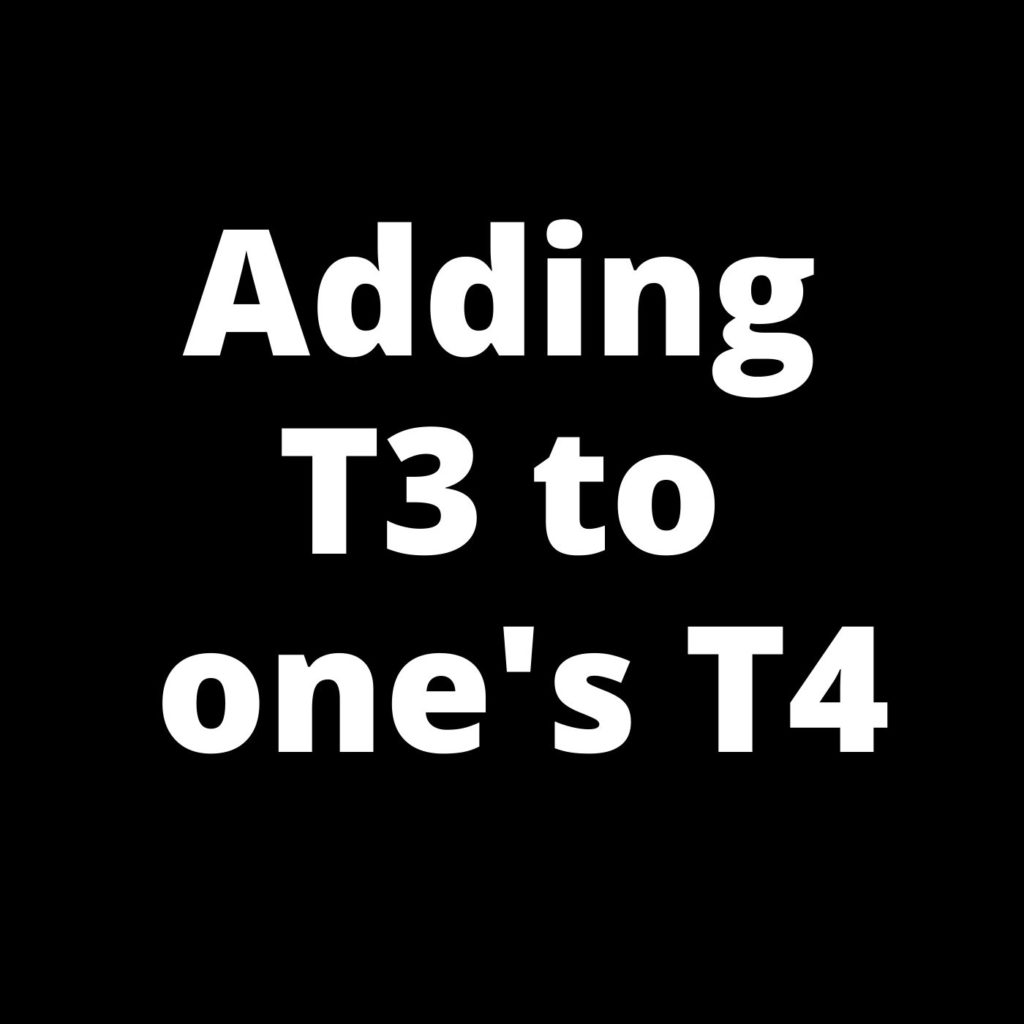
What have patients reported in their use of adding synthetic T3 (liothyronine) to synthetic T4 (thyroxine)?
Since problems can arise when on nothing but T4 (it’s simply a storage hormone), many patients are finding efficacy in adding direct T3 to that T4. Adding that T3 to the T4 better imitates what a healthy thyroid would be doing anyway–giving some direct T3 and not forcing a body to live for conversion alone from T4 to T3.
If someone has only been on T4, they report lowering the T4 a bit, then within the week (T4 has a long half-life), adding in some T3 in small amounts (since a T4-only user may not be used to the strength of T3). Then raises occur in small amounts every 5-7 days until one finds their optimal free T3. We as informed patients value lab testing along the way.
Also reported is dosing the T3 at least twice a day because of its short half-life, perhaps 4 hours apart. Some might add a small amount like 2.5 mcg at bedtime, but that’s individual–it helps some sleep better; others it keeps awake.
Patients have noted that it doesn’t matter when the T4 is taken (it will be converting to some T3 in the background). For convenience sake, the T4 can still be taken once a day in the morning, or at bedtime, patients have reported.
When on the T4/T3 combination, patients have done well when their frees are optimal, such as a free T3 towards the top area of the range, and a free T4 right around mid-range. Why only around mid-range for free T4 or very slightly above? Because over time, patients started to see an increase in RT3, the inactive hormone, if they went too far above mid-range.
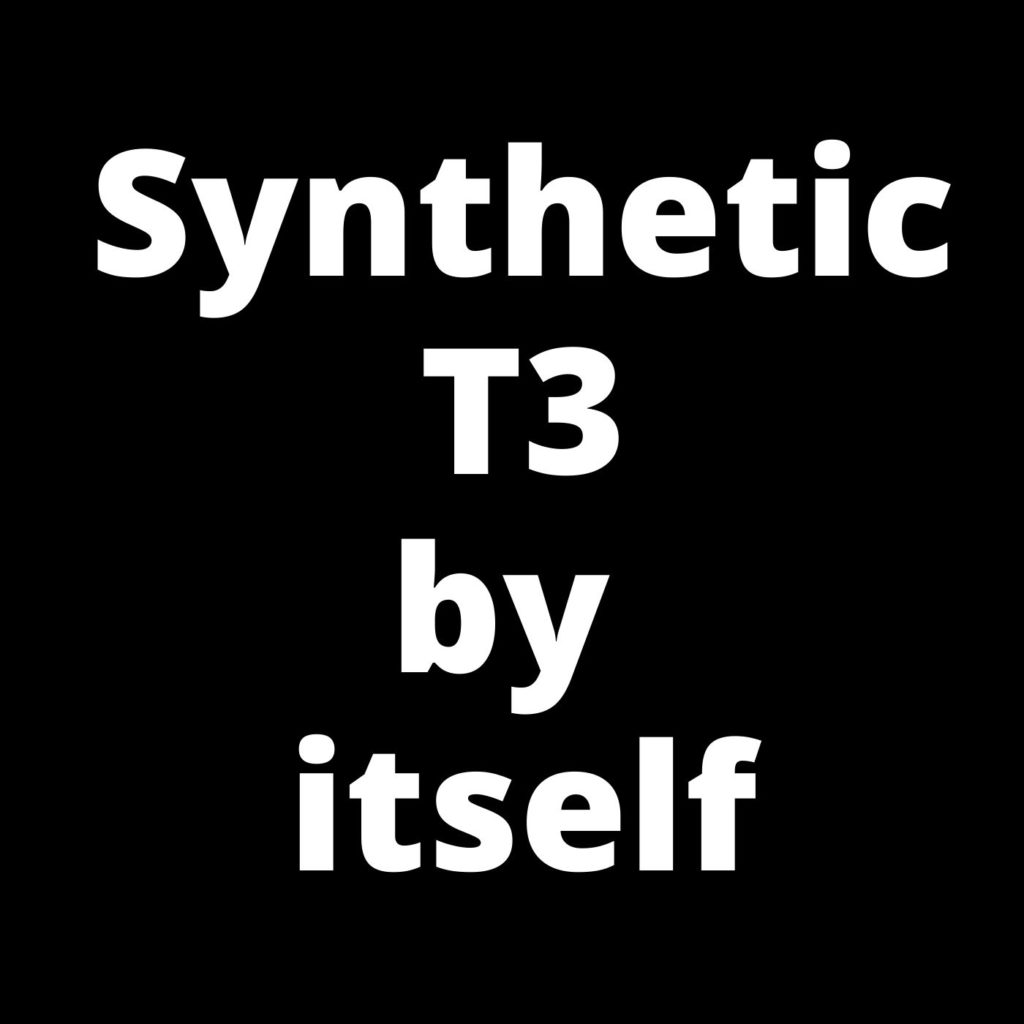
Do some hypothyroid patients use nothing but T3-only (liothyronine)?
Yes, some might choose to use nothing but T3, and it has been reported by patients of all ages. But we learned that we can’t forget a dose, as we’ll not have any T4 converting to T3 in the background for us. We usually dose 3 times a day for nothing but T3. Some eventually do well on twice a day as the tissues become saturated. Occasionally, we hear from someone who is doing T3 once a day, but it seems the majority need to do 2-3 times a day.
Some might be using mostly T3 to help lower high Reverse T3, the inactive hormone. RT3 can go up due to low iron, high cortisol, chronic inflammation, after surgery, any injury, Lyme, mold illness..to name a few.
When optimal on nothing more than T3-only, patients report they achieve a free T3 at the very top if not slightly over, and mention no problems (unless it’s revealing a cortisol problem). Free T4 will naturally be quite low and patients have not found that to be a problem as long as they are multi-dosing the T3.
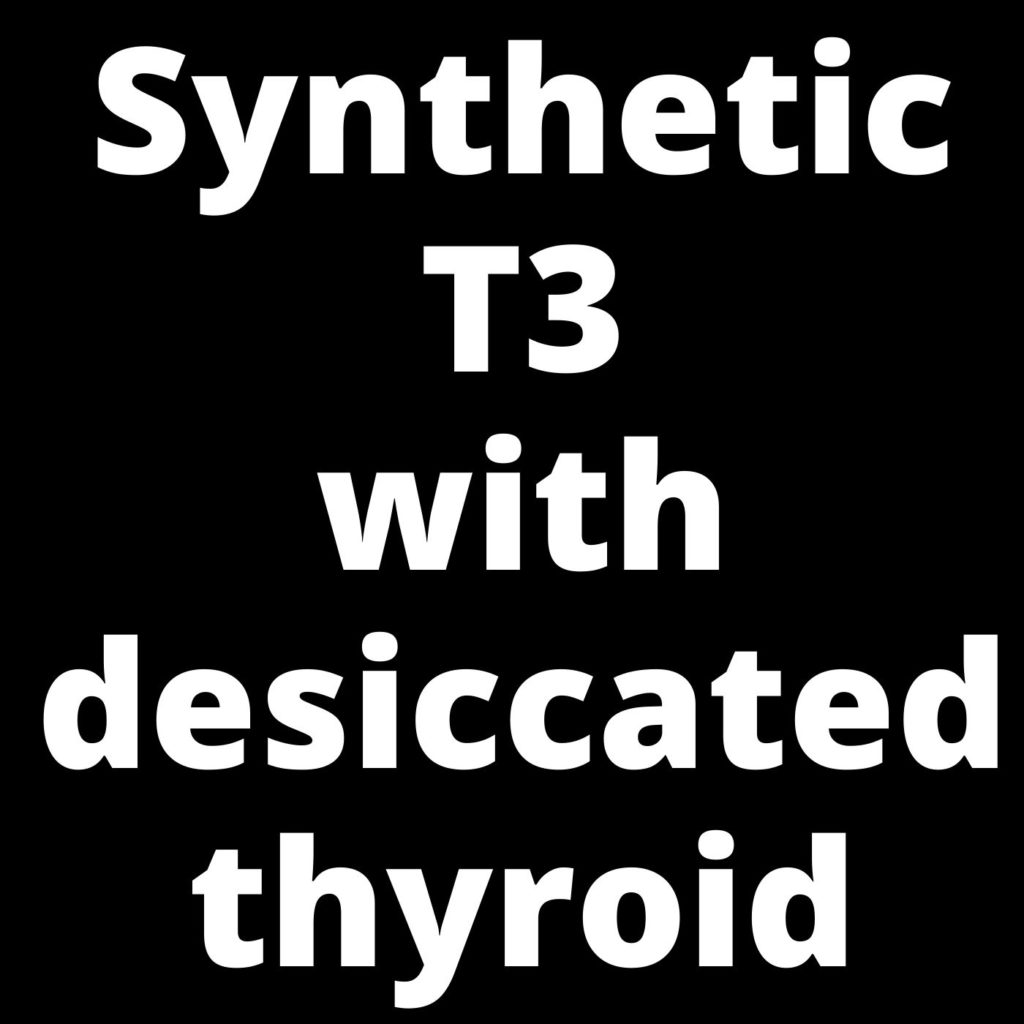
Is there ever a reason to add T3 to NDT (natural desiccated thyroid)?
Some patients, when they were having trouble with raising NDT for any reason, have added T3 to it and done well. Hopefully, the reasons for the trouble can be corrected.
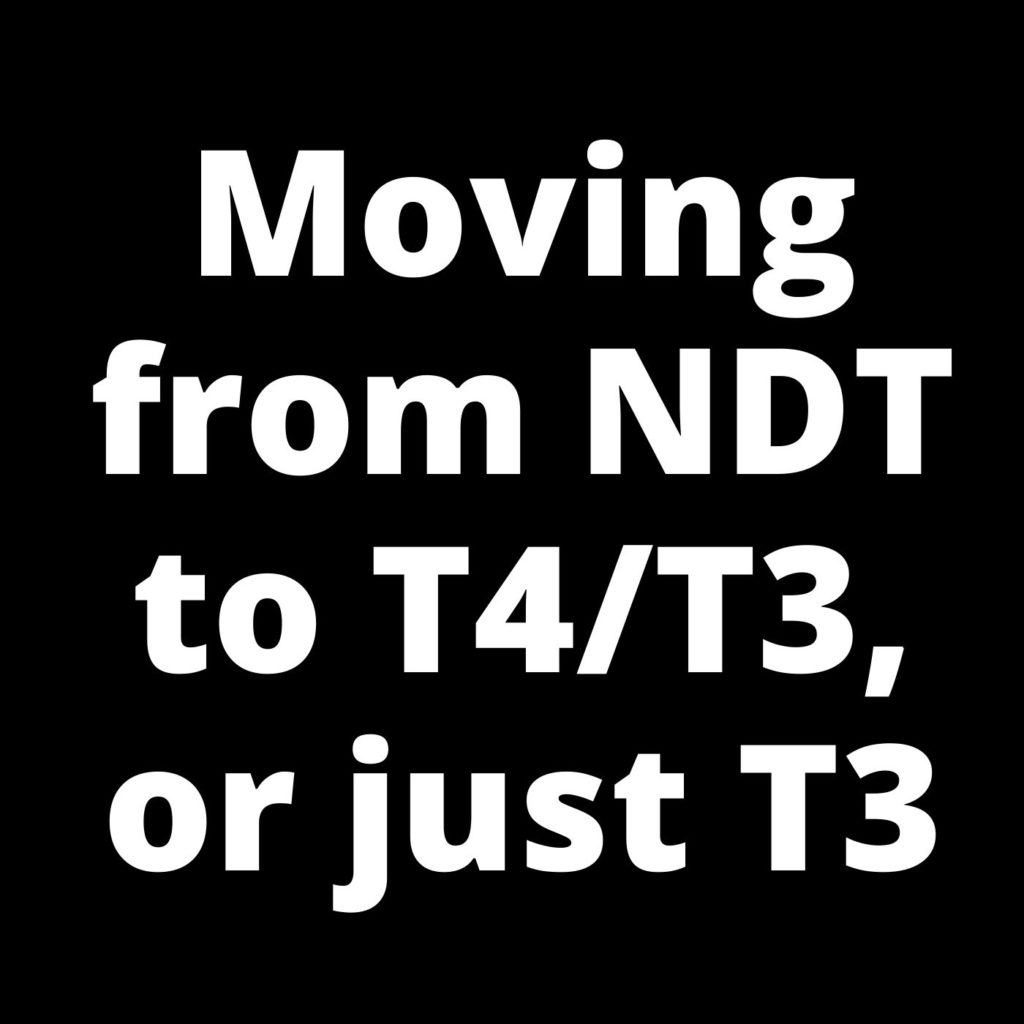
If patients move from natural desiccated thyroid to either T4/T3 or just T3, how does it work?
Some patients with their doctor’s support have taken their NDT on a last day, then started T4/T3 the next. Since one grain of NDT has usually been listed as 38 mcg T4 and 9 mcg T3, those equivalences can be started for synthetic T4 and T3, we as patients have learned. For example, two grains = 76 mcg T4 (which is 38mcg times two) and 18 mcg T3 (which is 9 mcg times two). And so on.
If moving from NDT to straight T3, some doctors have guided their patients to lower NDT bit by bit while adding in T3. Lowering NDT will also slowly lower the conversion to T3. We know that one grain of NDT is equal in effect to ~25 mcg of T3. So two grains NDT would be equal in effect to 50 mcg. And so on. We also learned to redo labs after a few weeks on the change. Do work with your doctor.
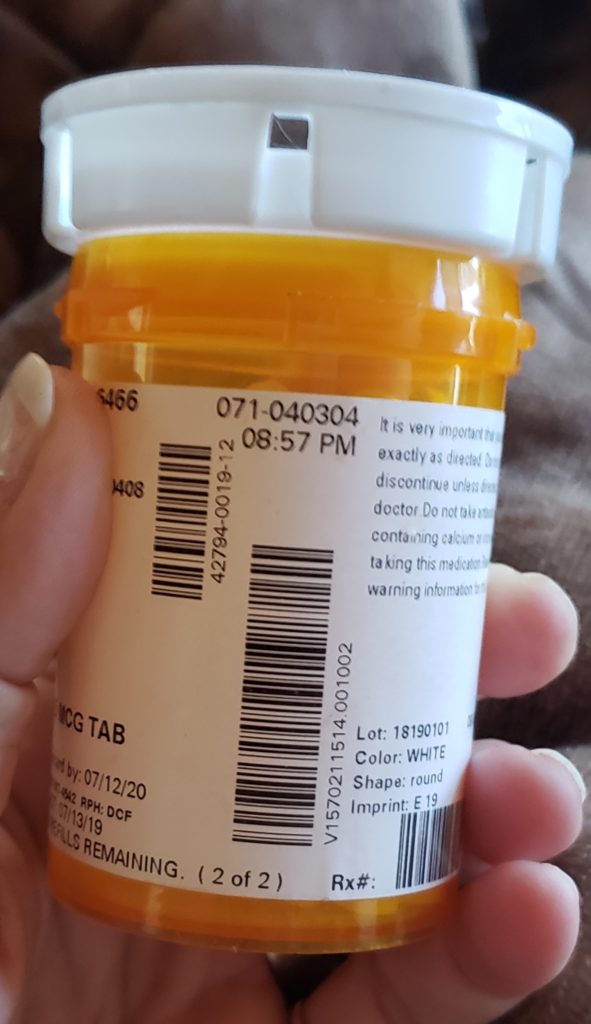
How we learned to start on T3 if using it alone
Generally, if one is not used to being on T3, reported starting doses are 5 mcg in the morning, and another 5 mcg when one’s signs (BP, heartrate, etc) and symptoms (tiredness) dictate it, etc–that’s usually about 4 hours after the first dose. A third 5 mcg dose is added about four hours later.
If someone might have reason to be particularly sensitive to the strength of T3, they and with their doctors guidance may be doing 2.5 mcg each dose, we have learned.
Raises occur approximately once a week, as T3 is fast acting unlike T4.
What have patients reported about raising their T3-only, whether used by itself or with T4-only?
- Patients discovered that because T3 is so fast-acting, they can raise it by small amounts every 5-7 days.
- Doing the free T3 lab result can also be done in 5-7 days, patients have noticed.
- A body have patients and their informed doctors have discovered that a good area to test the free T3 is the 40-50 mcg range, since it’s been observed that this is the beginning amount where the free T3 becomes optimal for “some”. Others end up being higher when their free T3 is optimal.
How do patients avoid problems when using T3?
One hard-earned lesson is that having a cortisol problem (low cortisol particularly, but sometimes high will do the same) will cause problems/bad reactions with raising that resemble hyper-like symptoms, like faster heartrate, palps, anxiety, jitteriness, etc. That’s why patients report that it’s imperative to check one’s cortisol levels via saliva testing. The adrenal info page has Discovery Steps, or you can go here to order your own saliva cortisol test.
Think you may have a cortisol problem? Had hyper-like symptoms when raising T3? Study chapters 5 and 6 in the updated revision Stop the Thyroid Madness book about adrenals. Can also be shared with your doctor.
You will also find an excellent chapter about T3, the active, life-changing hormone! This is your Bible of Patient Experiences and Wisdom.
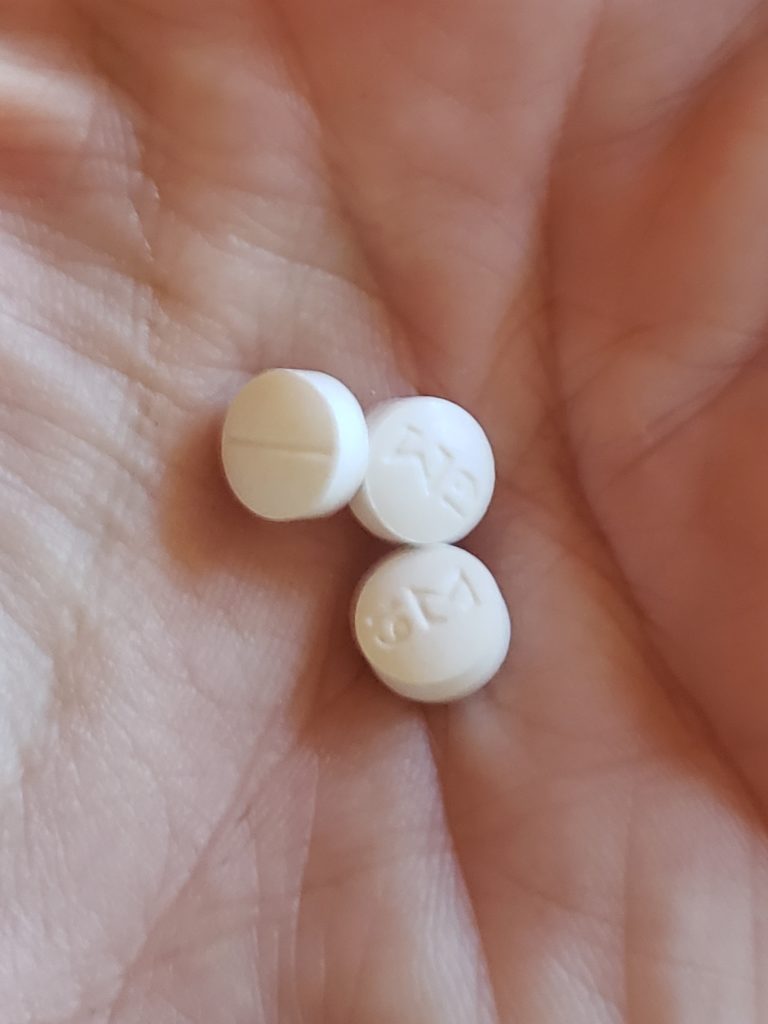
Is it true that T3 may be too stimulative for some people, as if they should avoid it?
It’s true that for some who are elderly, or for those with heart issues, patients and their wise doctors have found it important to start much lower and raise in low amounts, as well.
But can we literally overdose on T3?
Of course we can. But that’s why we learned to critically do and watch the free T3 lab result with our doctor. Optimal puts it in the top area of the range. If in the top of the range, one still has hypo symptoms, that high Free T3 could represent pooling–the latter due to a cortisol problem.
Why a bedtime dose?
Patients first heard about this with the late Dr. John C. Lowe. Turns out that your body can have its greatest need for T3 during the time you are asleep! But not everyone can tolerate T3 at bedtime (keeps them awake), so they have to experiment. Low doses may avoid the sleep issue.
What about cutting up tablets?
You’ll need a quality pill cutter. But some T3-only breaks easily by itself, or with dry teeth.
Have patients always dosed 3 times a day?
Not necessarily. When some have been on T3 long enough, they might even be able to dose twice a day, but three times is common, say patients.
Why did T3-only make some state they feel worse??
It‘s usually revealing a cortisol problem. See this page.
What about slow-release T3?
Yes, there are some who swear by it. But others say it’s a problem. You can’t give yourself exactly what you need, when you need it, because it’s “slowly” releasing. Second, it runs out too fast later in the day, say patients report. Even Dr. John C. Lowe stated it can be a problem, since the slow-release can end up in your intestines and you “poop” it out. So it’s up to you.
If patients have found high Reverse T3 (RT3), do they have to be on T3-only to lower it?
Most of the time, yes, we have experienced. Or at least mostly T3 and very low T4.
***Patients learned that it’s still important to treat the reason for the too-high Reverse T3 (RT3), which is usually inadequate iron and/or cortisol problem. This page explains.
What if a patient had both high RT3 and pooling of T3, the latter due to a cortisol problem?
There are some patients whose low iron and/or cortisol issues causes both problems–RT3 going up, plus T3 going far too high for awhile called pooling. Patients report the same protocol above–greatly lowering NDT to one grain which can lower the RT3 over time. But caution is important if one adds in T3 as a second and third dose until the reason for the high pooling is discovered and treated.
How long has it taken patients to lower high RT3?
It can take up to 8-12 weeks (sometimes less) for the high RT3 to fully fall, patients have noticed, and anywhere during that lowering process, patients report suddenly feeling a little hyper as the T3 comes up and is better able to reach good cellular levels (which the excess RT3 prevented). But we found that it’s crucial to be treating the causes for the high RT3 or pooling in the first place.
***If you need info with you, take your copy of the updated revision STTM book https://laughinggrapepublishing.com/product/sttm/ with you and you can refresh your knowledge in the waiting room!
Worldwide brands include Tertroxin, Linomel, Cyronine, Unipharma, Ti-Tre, Tironina, Tiromel, Trijodthyronin and more. All brands of T3 are synthetic, but work well, especially if we have optimal cortisol levels. You can see most brands and fillers at the bottom part of this page.
As with any page on STTM, this is copyrighted info. It’s based on what patients have reported in their use of dosing with T3. It is for informational purposes and is not meant to be seen as personal medical advice. Work with your doctor. Read the Disclaimer. For clarification, “T3-only” means a pill that only contains the active thyroid hormone T3.
Some of most worthy patient-to-patient books to own and refer to, below! Read about them here. Consider asking your doctor to read them, too.
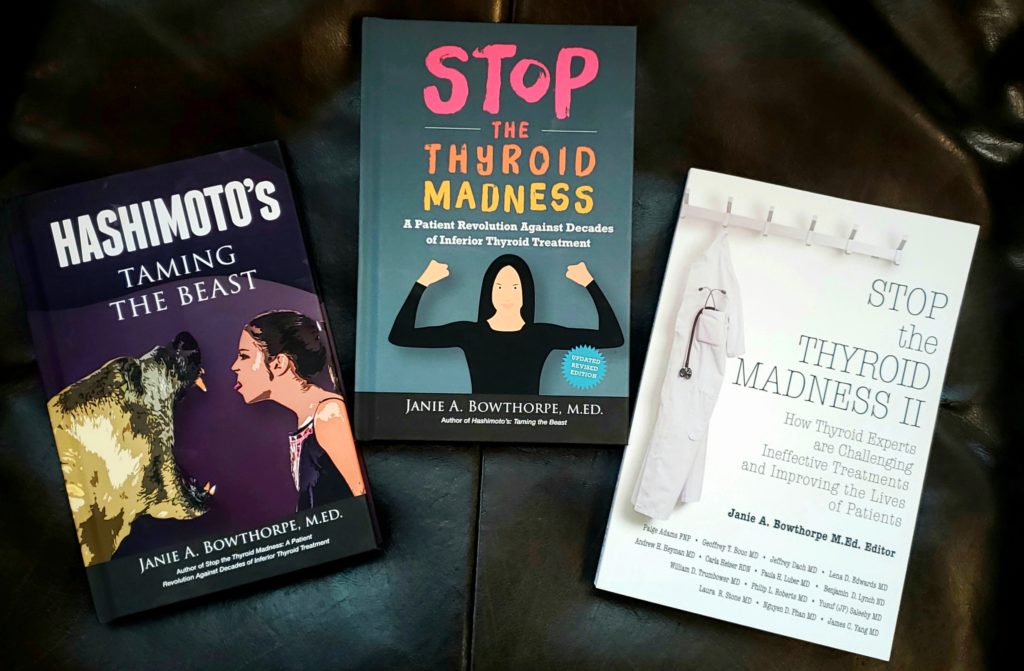
Important note: STTM is an information-only site based on what many patients worldwide have reported in their treatment and wisdom over the years. This is not to be taken as personal medical advice, nor to replace a relationship with your doctor. By reading this information-only website, you take full responsibility for what you choose to do with this website's information or outcomes. See the Disclaimer and Terms of Use.
